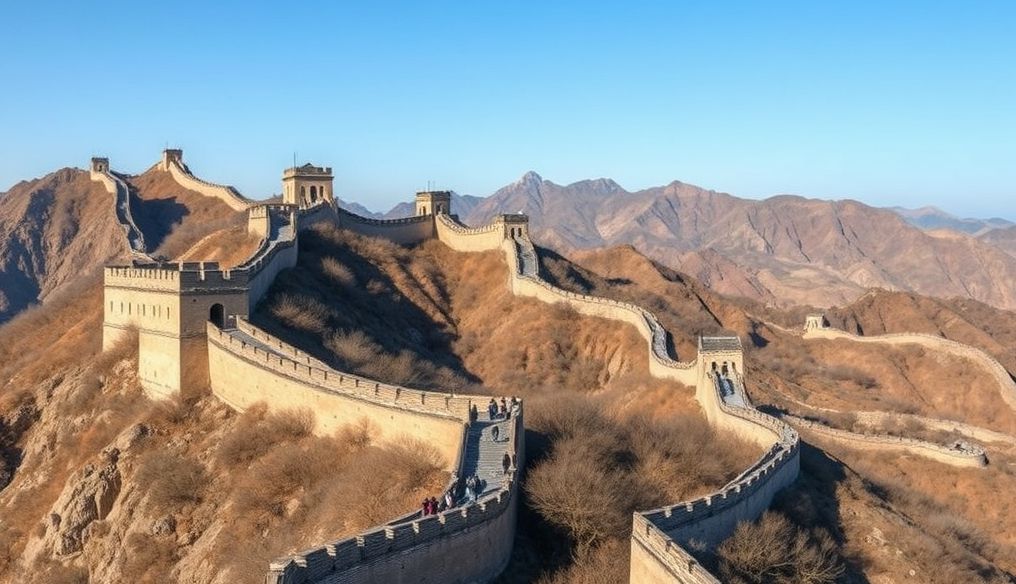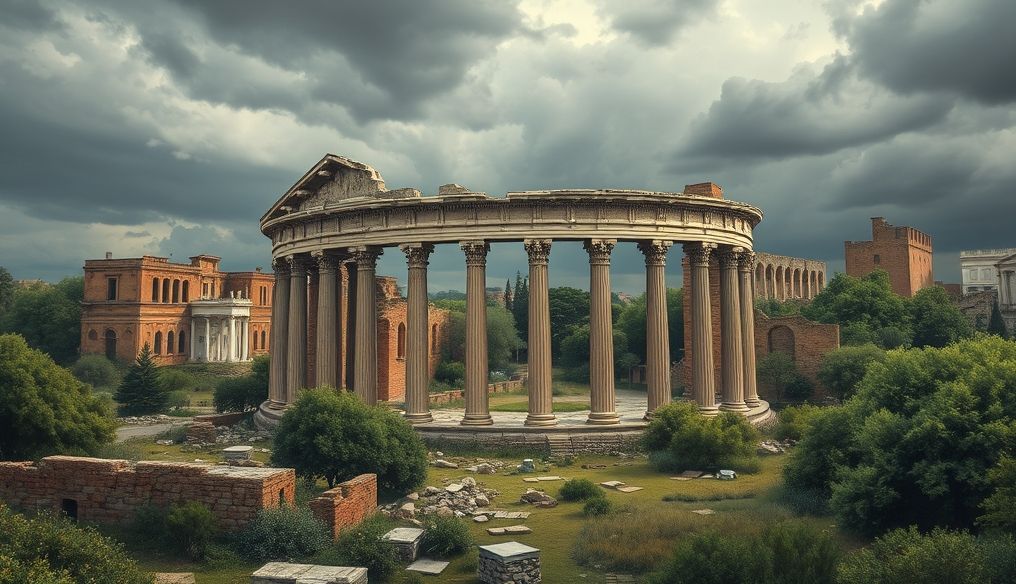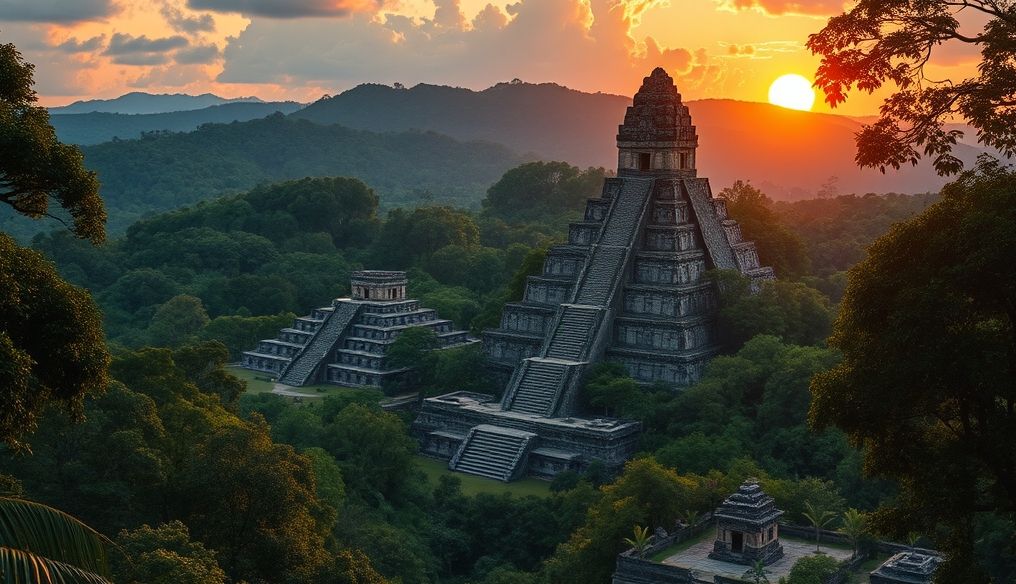Introduction: The Great Wall of China - A Symbol of Grandeur or a Defensive Necessity?
The Great Wall of China, one of the New Seven Wonders of the World, stretches for thousands of kilometers across the rugged terrain of northern China. This colossal structure has long raised questions about the true purpose of its construction. Was it merely a symbol of the grandeur of the Chinese Empire, or was it a defensive necessity to protect the country from invaders? In this article, we will delve into the history of the Great Wall of China, explore the different stages of its construction, and the reasons that drove Chinese emperors to invest enormous resources in this massive project.
Chapter 1: The Roots of the Wall - From Local Fortifications to the Great Wall
The Great Wall of China did not begin as a single continuous wall, but as a collection of fortifications and small walls built by various kingdoms and feudal estates during the Spring and Autumn period (771-476 BC) and the Warring States period (475-221 BC). These walls were intended to protect agricultural lands and cities from attacks by nomadic tribes and rival kingdoms.
- Spring and Autumn and Warring States Periods: Construction of separate defensive walls by kingdoms and estates.
- Purpose of the Walls: Protecting agricultural lands and cities from invaders.
- Materials Used: Rammed earth, stones, and wood.
Chapter 2: Unification of China and the Beginning of the Great Wall - The Reign of Emperor Qin Shi Huang
After Emperor Qin Shi Huang unified China in 221 BC, he ordered the unification of the existing defensive walls to create a single long wall stretching along the northern border of the empire. The aim was to protect China from attacks by the nomadic Xiongnu tribes.
Key Achievements of Qin Shi Huang in Building the Wall:
- Unifying existing walls to create a single long wall.
- Using forced labor from soldiers, criminals, and peasants.
- Expanding the scope of the wall to include new areas.
Challenges Faced in Building the Wall During Qin's Reign:
- Harsh climatic conditions and rugged terrain.
- Lack of resources and supplies.
- Resistance to forced labor.
Chapter 3: The Great Han Wall - Expansions and Improvements During the Han Dynasty
During the reign of the Han Dynasty (206 BC - 220 AD), the Great Wall of China was significantly expanded westward, and new watchtowers and fortresses were built. The aim was to protect the Silk Road trade route and secure the borders against attacks by nomadic tribes.
Key Achievements of the Han Dynasty in Building the Wall:
- Expanding the wall westward to protect the Silk Road.
- Building new watchtowers and fortresses.
- Using brick and stone in construction.
Chapter 4: Periods of Stagnation and Neglect - The Wall Under Other Dynasties
After the fall of the Han Dynasty, the Great Wall of China experienced periods of stagnation and neglect. Some dynasties did not care about maintaining the wall, while others focused on building defensive walls in other parts of the country.
Chapter 5: Revival of the Wall - The Reign of the Ming Dynasty
During the reign of the Ming Dynasty (1368-1644), the Great Wall of China was completely rebuilt, and brick and stone were used extensively. The majority of the wall we see today was built during this period. The aim was to protect China from attacks by the Mongols and other nomadic tribes.
Key Achievements of the Ming Dynasty in Building the Wall:
- Completely rebuilding the wall using brick and stone.
- Building sturdy watchtowers and fortresses.
- Expanding the scope of the wall to include strategic areas.
Chapter 6: Design of the Wall - Integrated Fortifications
The Great Wall of China consists of a variety of fortifications, including walls, watchtowers, fortresses, barracks, and armories. These fortifications were designed to provide an integrated defense against invaders.
- Walls: Providing a physical barrier against invaders.
- Watchtowers: Providing observation points to monitor enemy movements.
- Fortresses: Providing safe havens for soldiers.
- Barracks: Providing accommodation for soldiers.
- Armories: Storing weapons and ammunition.
Chapter 7: The Real Objectives of Building the Wall - More Than Just Defense
Although the Great Wall of China was primarily intended to protect China from invaders, it also had other objectives, such as:
- Controlling Immigration: Regulating the movement of people and goods across borders.
- Showing the Power of the Empire: A symbol of the grandeur of the Chinese Empire and its ability to protect its territories.
- Promoting National Unity: Uniting the Chinese people around a common goal.
Chapter 8: The Wall Today - A Tourist Attraction and a World Heritage Site
Today, the Great Wall of China is a popular tourist attraction and a UNESCO World Heritage Site. Millions of tourists visit it every year to enjoy its beauty and the splendor of its design. The Wall represents a symbol of the greatness of Chinese civilization and its ability to endure and overcome challenges.
Conclusion: The Legacy of the Great Wall
The Great Wall of China is not just a massive stone wall, but a symbol of Chinese will and its ability to achieve the impossible. The Wall remains a testament to a long history of struggles and victories, and a reminder of the strength of Chinese civilization and its ability to endure and adapt to changing circumstances.




